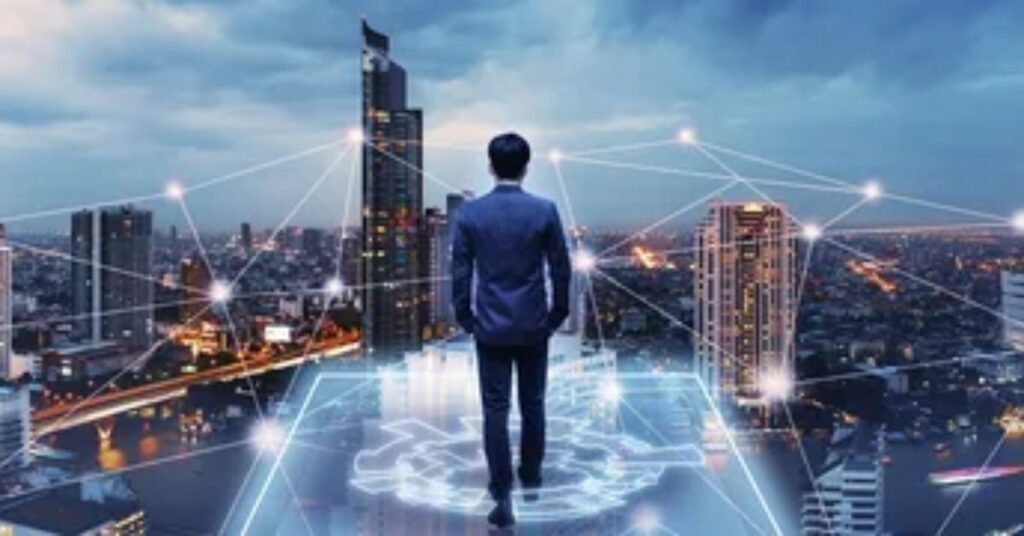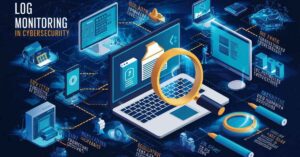In the heart of the global tech landscape, a digital revolution is unfolding. FTAsiaEconomy Technology isn’t just a buzzword; it’s the driving force behind Asia’s economic transformation. From bustling metropolises to rural villages, technology is reshaping how people live, work, and interact. Let’s dive into this tech-powered odyssey and explore how it’s changing the game for businesses worldwide.
The Rise of Fintech in FTAsiaEconomy
Fintech in Asia isn’t just growing; it’s exploding. The FTAsiaEconomy technology sector is rewriting the rules of finance, making money smarter and more accessible than ever before.
Digital Payments
Gone are the days when cash was king. In many Asian countries, your smartphone is now your wallet. Take China, for instance. WeChat Pay and Alipay have turned QR codes into a way of life. In 2020 alone, mobile payments in China reached a mind-boggling $67 trillion.
But it’s not just about convenience. Digital payments are a lifeline for the unbanked. In India, the Unified Payments Interface (UPI) processed over 22 billion transactions in 2020, bringing millions into the formal financial system.
Blockchain and Cryptocurrencies
While the West debates, Asia innovates. Blockchain isn’t just for crypto enthusiasts anymore. It’s revolutionizing supply chains, making them transparent and efficient.
“Blockchain in Asia isn’t a future prospect; it’s a present reality,” says Dr. Lee Jong-ho, a fintech expert at Seoul National University.
Governments are bullish on blockchain, they include Singapore which has initiated Project Ubin, and China through the Blockchain-based Service Network (BSN). And how could we have omitted cryptocurrencies from the discussion? This is because even though regulatory measures have been put in place to control the use of cryptocurrencies, Asia is leading in the adoption of this technology. Currently, over 60% of the entire cryptocurrency users are in the Asia-Pacific region.
Artificial Intelligence and Machine Learning
AI isn’t just changing the game; it’s creating entirely new ones. In the FTAsiaEconomy technology landscape, AI is the secret sauce making businesses smarter and more efficient.
Financial Services
Imagine getting a loan approved in minutes, not days. That’s the power of AI in Asian fintech. Companies like Ant Financial use AI to assess creditworthiness, analyzing everything from social media activity to online shopping habits.
But it’s not just about speed. AI is making finance more inclusive. In countries like Indonesia, where credit history is often limited, AI-powered alternative credit scoring is opening doors for millions.
Healthcare
In a post-pandemic world, AI in healthcare isn’t a luxury; it’s a necessity. From diagnosis to drug discovery, AI is revolutionizing healthcare across Asia.
- Diagnosis: AI systems in China can diagnose certain cancers with 95% accuracy.
- Telemedicine: In India, platforms like Practo connect millions to doctors virtually.
- Drug Discovery: Singapore’s Insilico Medicine uses AI to cut drug development time from years to months.
Internet of Things (IoT)

The FTAsiaEconomy technology sector is turning science fiction into reality with IoT. From smart cities to intelligent factories, IoT is weaving a web of connectivity that’s transforming lives and businesses.
Smart Cities
Asia is not just constructing cities but is molding the future. One good example is Singapore which embarked on the Smart Nation project. From traffic to even air quality, sensors placed all over the city-state help to improve the efficiency and sustainability of life in urban areas.
In South Korea, Songdo International Business District is a living laboratory of IoT innovation. From waste management to energy conservation, every aspect of city life is optimized through technology.
Manufacturing
The fourth industrial revolution is in full swing in Asia’s factories. IoT is turning assembly lines into marvels of efficiency.
- Predictive Maintenance: Sensors detect issues before they become problems, saving millions in downtime.
- Supply Chain Optimization: Real-time tracking ensures products move from factory to consumer with unprecedented speed and accuracy.
- Quality Control: AI-powered systems catch defects human eyes might miss, ensuring higher quality products.
5G Technology
If data is the new oil, 5G is the pipeline delivering it at lightning speed. The FTAsiaEconomy technology landscape is being reshaped by this next-generation network.
Telecommunications
Asia isn’t waiting for the future; it’s building it. South Korea became the first country to achieve nationwide 5G coverage in 2019. China isn’t far behind, with plans to have 560 million 5G users by 2023.
But it’s not just about speed. 5G is enabling new services and business models:
- Virtual Reality (VR) and Augmented Reality (AR): From virtual shopping to immersive education, 5G is making these technologies mainstream.
- Industrial IoT: Ultra-low latency is revolutionizing manufacturing and logistics.
- Smart Agriculture: Precision farming techniques are increasing yields and sustainability.
Autonomous Vehicles
Self-driving cars aren’t just a Silicon Valley dream. They’re becoming a reality on Asian roads. In Japan, companies like Toyota are testing autonomous taxis. In China, Baidu’s Apollo project is turning science fiction into everyday reality.
Cybersecurity
With great connectivity comes great responsibility. As the FTAsiaEconomy technology sector booms, so does the need for robust cybersecurity.
Regulatory Frameworks
Asia’s approach to cybersecurity is as diverse as the continent itself. Singapore’s Cybersecurity Act sets a gold standard for national cybersecurity strategies. China’s Cybersecurity Law, while controversial, shows the government’s commitment to data protection.
Advanced Security Technologies
Asian companies aren’t just defending; they’re innovating:
- AI-Powered Threat Detection: Companies like Sangfor Technologies in China are using AI to spot and neutralize threats in real time.
- Quantum Cryptography: China’s quantum satellite, Micius, has demonstrated unhackable communication over vast distances.
- Biometric Authentication: From facial recognition to voice authentication, Asian tech is making passwords obsolete.
Technological Updates FTAsiaEconomy: Most Important Technologies and Their Impacts

The FTAsiaEconomy technology landscape is constantly evolving. Here’s a snapshot of the most impactful technologies reshaping the region:
Digital Transformation
E-commerce isn’t just growing; it’s exploding. In Southeast Asia alone, the e-commerce market is expected to reach $300 billion by 2025. Platforms like Alibaba and Shopee aren’t just selling products; they’re creating ecosystems.
Cloud computing is the backbone of this digital revolution. Asian cloud providers like Alibaba Cloud and Tencent Cloud are giving global giants a run for their money.
5G and Connectivity
The impact of 5G goes beyond faster downloads. It’s enabling new business models and solving age-old problems:
- Smart Cities: From traffic management to waste disposal, 5G is making urban living more efficient.
- Telemedicine: Remote surgeries and AI-powered diagnostics are becoming a reality.
- Education: Virtual classrooms are bridging the urban-rural divide in countries like India and Indonesia.
Artificial Intelligence/Machine Learning
AI isn’t just for tech companies anymore. It’s transforming traditional industries:
- Finance: AI-powered robo-advisors are democratizing investment.
- Agriculture: Machine learning is optimizing crop yields and reducing waste.
- Manufacturing: Predictive maintenance is saving millions in downtime.
Future Prospects and Challenges
The FTAsiaEconomy technology sector is brimming with opportunities, but it’s not without its challenges.
Opportunities
- Emerging Tech Hubs: Cities like Shenzhen and Bangalore are becoming global innovation centers.
- Cross-Border Collaboration: Initiatives like the ASEAN Smart Cities Network are fostering regional cooperation.
- Investment Prospects: For U.S. businesses, Asia offers a testing ground for cutting-edge technologies.
Challenges
- Digital Divide: As technology advances, there’s a risk of leaving behind less developed regions.
- Regulatory Harmonization: Navigating diverse regulatory landscapes remains a challenge for businesses.
- Geopolitical Tensions: Tech nationalism and trade disputes could hinder global collaboration.
FAQs
Q: Which is the most technologically advanced country in Asia?
While it’s hard to crown a single winner, South Korea, Japan, and Singapore consistently rank at the top. South Korea leads in 5G adoption and has a thriving startup ecosystem. Japan excels in robotics and automotive technology.
Q: How did technology affect East Asia?
Technology has been a game-changer for East Asia:
- Economic Growth: Tech-driven industries have fueled rapid economic development.
- Social Transformation: From communication to entertainment, technology has reshaped daily life.
- Global Influence: East Asian tech giants like Samsung and Alibaba have become global players.
Q: What are the advancements of Asia technology?
Asia is at the forefront of several technological advancements:
- 5G Networks: Asia leads in 5G deployment and adoption.
- Artificial Intelligence: From facial recognition to natural language processing, Asian companies are pushing AI boundaries.
Q: How has technology influenced economic growth in Southeast Asia?
Technology has been a catalyst for Southeast Asia’s economic transformation:
- Digital Economy: E-commerce and digital services are driving economic growth.
- Financial Inclusion: Fintech is bringing banking services to the unbanked population.








